The parrots are a broad order of more than 350 birds. Macaws, Amazons, lorikeets, lovebirds, cockatoos and many others are all considered parrots. Though there is great diversity among these birds, there are similarities as well. All parrots have curved beaks and all are zygodactyls, meaning they have four toes on each foot, two pointing forward and two projecting backward. Most parrots eat fruit, flowers, buds, nuts, seeds, and some small creatures such as insects.
The most obvious physical characteristic is the strong, curved, broad bill. The upper mandible is prominent, curves downward, and comes to a point. It is not fused to the skull, which allows it to move independently, and contributes to the tremendous biting pressure the birds are able to exert. The lower mandible is shorter, with a sharp, upward-facing cutting edge, which moves against the flat portion of the upper mandible in an anvil-like fashion. There are touch receptors along the inner edges of the kerantinised bill, which are collectively known as the 'bill tip organ', allowing for highly dextrous manipulations. Seed-eating parrots have a strong tongue (containing similar touch receptors to those in the bill tip organ), which helps to manipulate seeds or position nuts in the bill so that the mandibles can apply an appropriate cracking force. The head is large, with eyes positioned high and laterally in the skull, so the visual field of parrots are unlike any other birds. Without turning its head, a parrot can see from just below its bill tip, all above its head, and to quite far behind its head. Parrots also have quite a wide frontal binocular field for a bird, although this is nowhere near as large as primate binocular visual fields.
Parrots have strong zygodactyl feet with sharp, elongated claws, which are used for climbing and swinging. Most species are capable of using their feet to manipulate food and other objects with a high degree of dexterity, in a similar manner to a human using his hands. The predominant colour of plumage in parrots is green, though most species have some red or another colour in small quantities.
Parrots are found in warm climates all over most of the world. The greatest diversities exist in Australasia, Central America, and South America.
Although there are a few exceptions, parrots are monogamous breeders which nest in cavities and hold no territories other than their nesting sites. The pair bonds of the parrots and cockatoos are strong and a pair remains close even during the non-breeding season, even if they join larger flocks. As with many birds, pair bond formation is preceded by courtship displays. In Psittacidae parrots common breeding displays, usually undertaken by the male, include slow deliberate steps known as a "parade" or "stately walk" and the "eye-blaze", where the pupil of the eye constricts to reveal the edge of the iris. Allopreening is used by the pair to help maintain the bond.
Most parrots nest in cavities, either tree hollows or cavities dug into cliffs, banks or the ground. In most species the female undertakes all the incubation. The female remains in the nest for almost all of the incubation period and is fed both by the male and during short breaks. Incubation varies from 17 to 35 days, with larger species having longer incubation periods. The newly born young are altricial, either lacking feathers or with sparse white down. The young spend anything from three weeks to four months in the nest, depending on species, and may receive parental care for several months thereafter.
Many parrots are kept as pets, especially macaws, Amazon parrots, cockatiels, parakeets, and cockatoos. These birds have been popular companions throughout history because they are intelligent, charismatic, colorful, and musical. Some birds can imitate many nonavian sounds, including human speech. The male African gray parrot (
Psittacus erithacus) is the most accomplished user of human speech in the animal world; this rain forest-dweller is an uncanny mimic.
Currently the Convention on International Trade in Endangered Species (CITES) bans the sale of any wild-caught species, yet the parrots' popularity continues to drive illegal trade.
Some parrot species are highly endangered. In other cases, once tame birds have reproduced in the wild and established thriving feral populations in foreign ecosystems.
This was huge family of about 330 species. Now, however, following new evidence on lineages within the parrots [e.g., Schweizer et al. 2011, Joseph et al. 2013, Rheindt et al. 2014], both Cracraft (2013) and the South American Checklist Committee (2014) have adopted a four-family solution.
Families:
New Zealand Parrots Family Strigopidae
Cockatoos Family Cacatuidae
African & New World Parrots Family Psittacidae
Old World Parrots Family Psittaculidae
Two families of parrots are found in Southern Africa:
ORDER PSITTACIFORMES
Family Psittacidae (African & New World Parrots)
Family Psittaculidae (Old World Parrots)



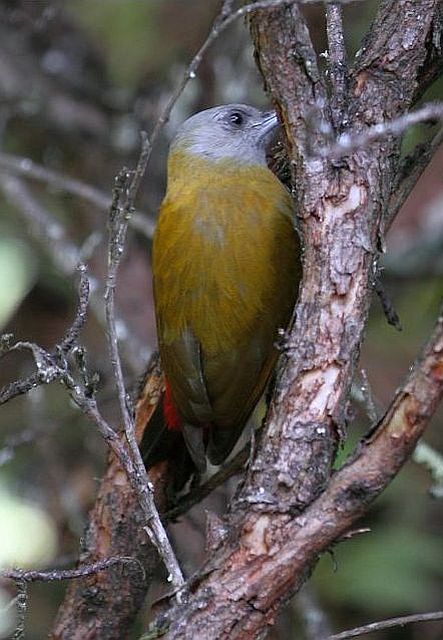 © Sharifa
© Sharifa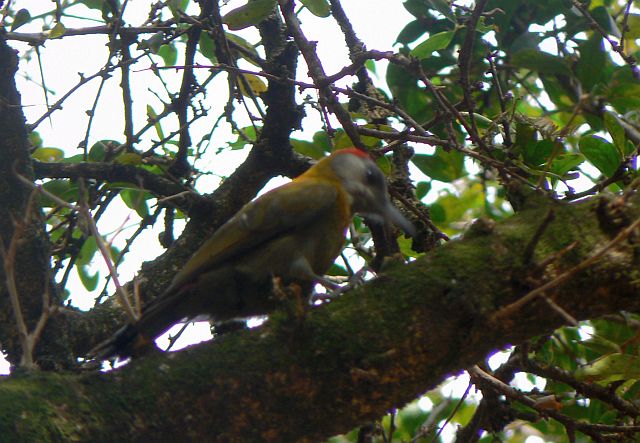 © Toko
© Toko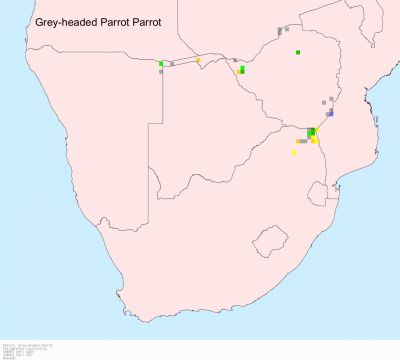
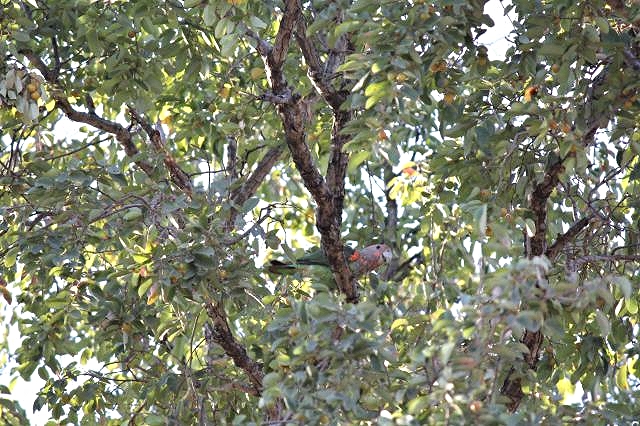 © General Gump
© General Gump 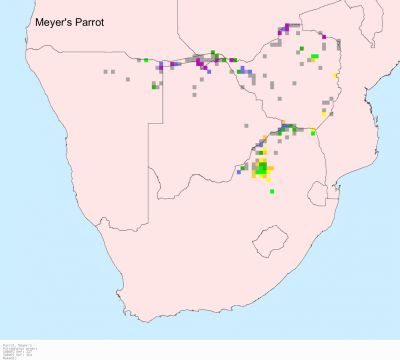
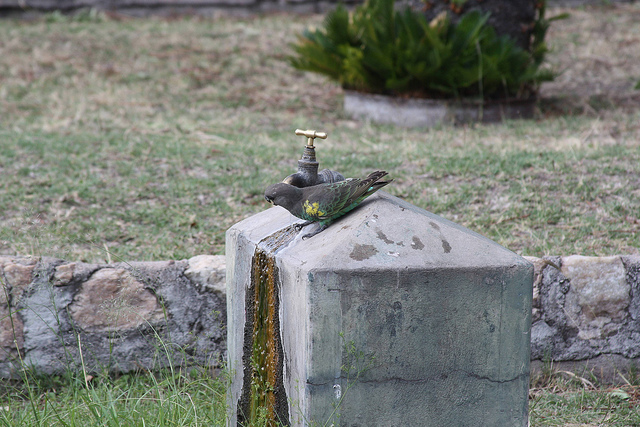
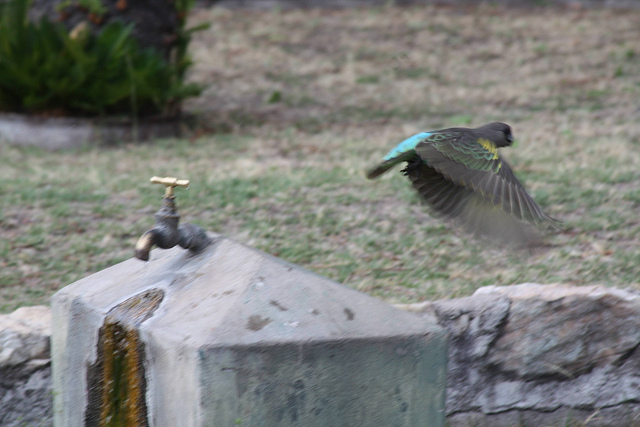
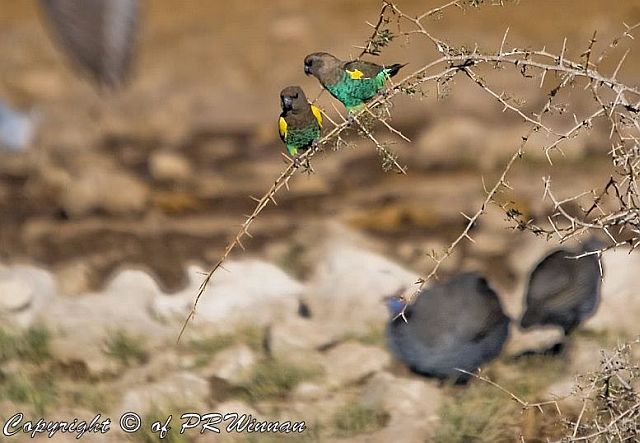 © PRWIN
© PRWIN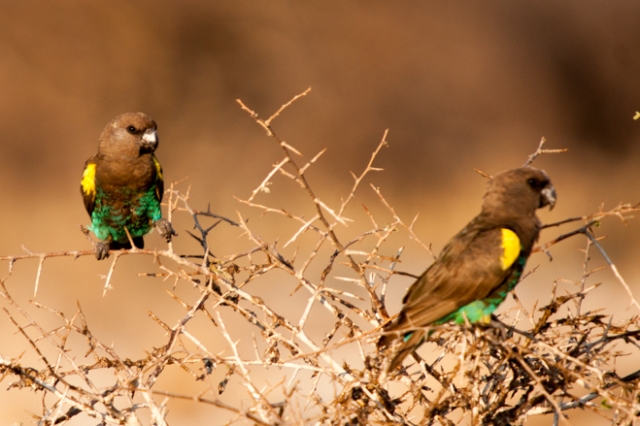 © Kesheshe
© Kesheshe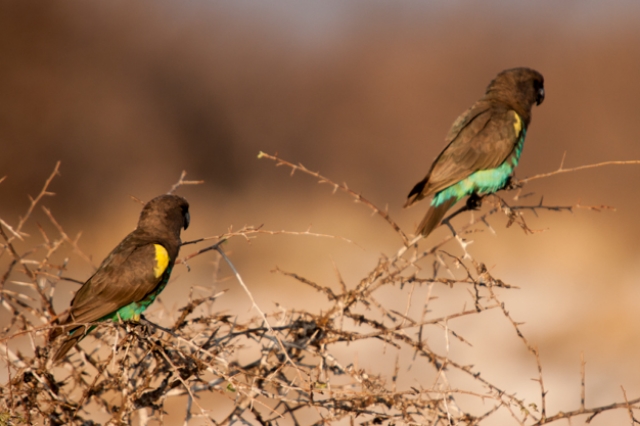 © Kesheshe
© Kesheshe